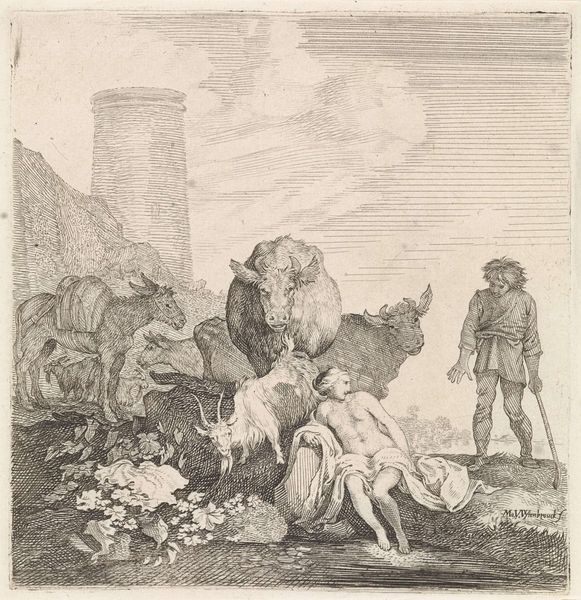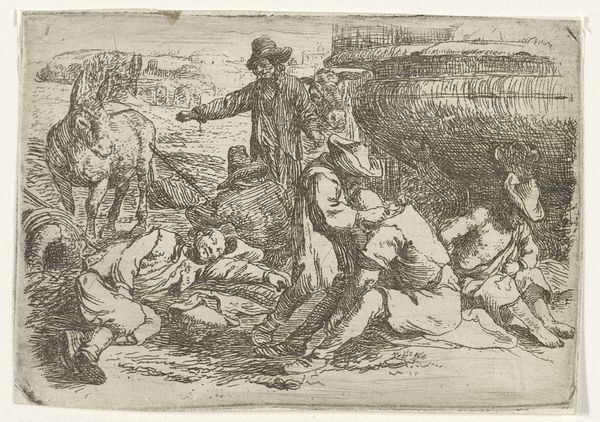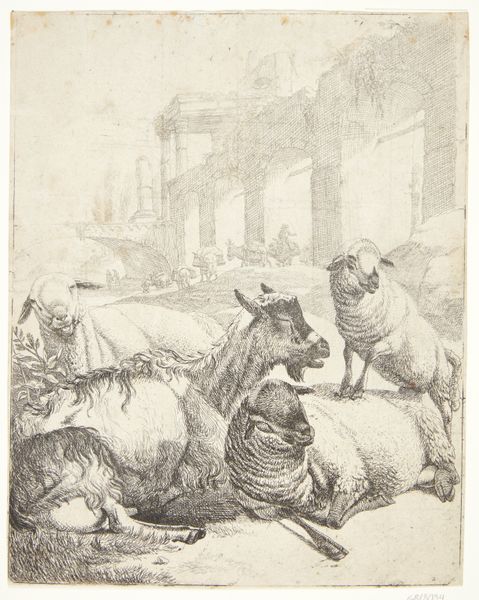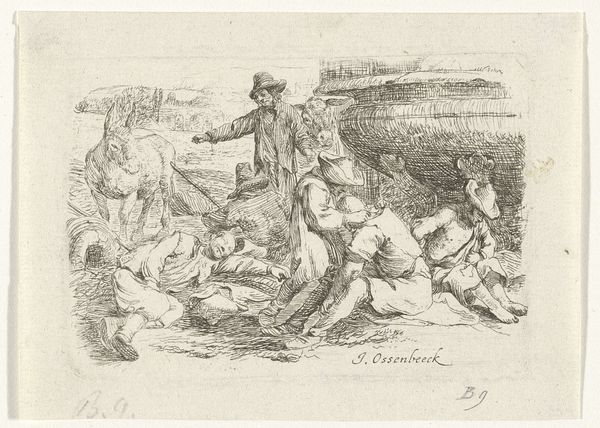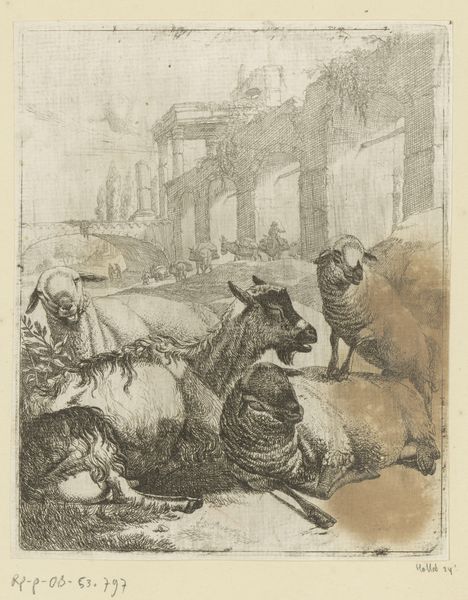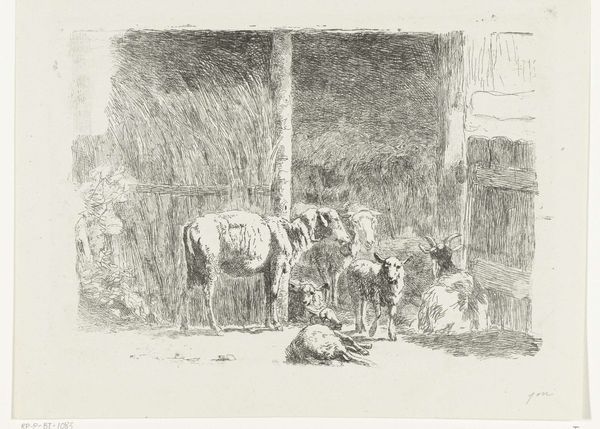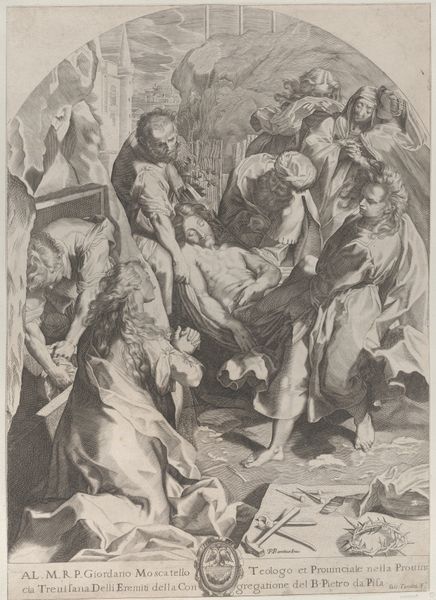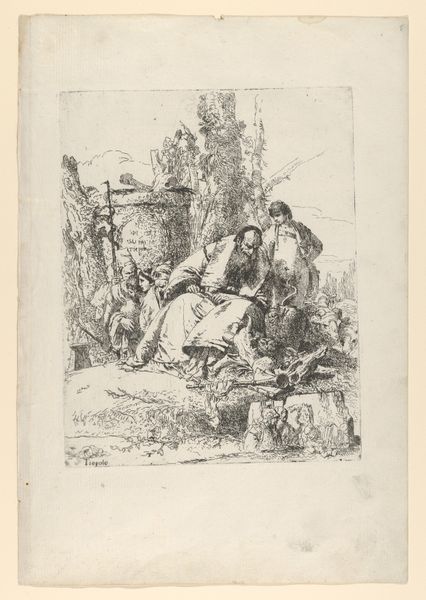
etching
#
baroque
#
etching
#
landscape
#
figuration
#
genre-painting
#
nude
Dimensions: height 148 mm, width 139 mm
Copyright: Rijks Museum: Open Domain
Curator: An intriguing early modern scene. It is "Vrouw verrast bij het baden" or "Woman Surprised Bathing," an etching attributed to Moyses van Wtenbrouck, dating possibly from 1600 to 1660. Editor: It has an almost dreamlike quality. The juxtaposition of the reclining nude with the mundane animals, like those goats, is quite odd and creates this curious tension. The sketchy lines add to that sense of immediacy, like a captured moment. Curator: Yes, Wtenbrouck used the etching technique to great effect. Note the varying densities of lines that give the landscape depth. See how he created form, through the precise use of hatching and cross-hatching, it’s very considered. Editor: Considering the period, one might argue it perpetuates the voyeuristic gaze, which, back then, reflected established social hierarchies. We must not disregard how the display of female nudes in art also mirrored women’s societal position—or lack thereof. Curator: Such a viewpoint, though increasingly considered, must also appreciate the symbolism. Perhaps the surprising of the bathing woman echoes allegories and classical stories often portrayed to communicate certain moral narratives. Editor: Allegory doesn't absolve problematic social implications. Who gets to look and who is looked at are questions central to interpreting the artwork and the society from where it came. Is it possible the artist wanted us to think about that? Curator: The architectural backdrop, though distant, does lend itself to that deeper, intellectual examination and symbolic potential that artists so favored. It moves us beyond simple, narrative painting and hints at wider stories. Editor: I agree the backdrop could function as such a signal. Despite its seemingly idyllic presentation, this scene serves to unveil societal undercurrents. I am very curious to see the evolution of Wtenbrouck's work within its political context, even if subtle in expression. Curator: Ultimately, this landscape functions to carry the weight of those deeper reflections on history. Wtenbrouck provides an interesting insight into that 17th-century vision.
Comments
No comments
Be the first to comment and join the conversation on the ultimate creative platform.
